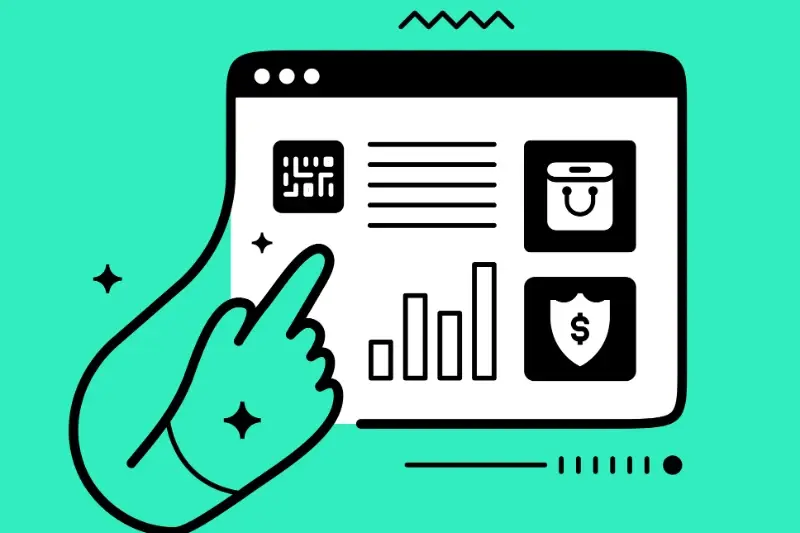How Choosing the Right App Category Can Double Your Downloads
You've built what you think is a great mobile app. The design looks good, the features work perfectly, and you're ready to launch. But then something frustrating happens—your download numbers are disappointingly low. You watch other apps in the store getting thousands of downloads whilst yours barely registers a blip. Sound familiar?
Here's what most app developers don't realise: the category you choose for your mobile app isn't just a filing system—it's one of the most powerful tools for download optimisation that you have at your disposal. I've been working with app developers for years, and I see this mistake happen all the time. People spend months perfecting their app's functionality but give about five minutes of thought to which category it should live in.
The right category choice can literally double your downloads, whilst the wrong one can bury your app so deep that potential users will never find it
Think about it this way: your app category determines who sees your app, when they see it, and what they expect from it. It affects how app store algorithms treat your mobile app and plays a huge role in your overall ASO impact. Get it right, and you're opening the door to users who are actively looking for what you offer. Get it wrong, and you might as well be invisible. The good news? Once you understand how categories really work and how to choose the right one, you can turn this situation around completely.
What Is An App Category And Why Does It Matter For Downloads
Think of an app category as your app's home address in the app store. Just like how you wouldn't put a cookbook in the fiction section of a library, your app needs to live in the right digital neighbourhood. App categories are the labels that tell both users and app store algorithms what your app actually does—whether it's a game, a productivity tool, a social media platform, or something else entirely.
When you submit your app to Google Play or the Apple App Store, you have to pick a primary category. This isn't just a formality; it's one of the most important decisions you'll make for your app's success. The category you choose directly affects who sees your app, when they see it, and whether they bother downloading it.
Categories Shape User Behaviour
Users browse app stores differently depending on what they're looking for. Someone hunting for a new fitness app will head straight to the Health & Fitness category, whilst someone bored on a Tuesday evening might scroll through Games. If your fitness app somehow ended up in Entertainment, you'd miss out on all those motivated people specifically looking for workout apps.
Categories also set expectations. A user downloading from the Photography category expects photo editing tools or camera features—not a social media app that happens to include photos. Getting this wrong can lead to poor reviews and quick uninstalls, which damages your app's ranking in the long run.
The Algorithm Connection
App store algorithms use categories to decide which apps to recommend to users. When someone downloads several puzzle games, the algorithm learns their preference and suggests more apps from that category. Being in the wrong category means missing out on these automatic recommendations that can drive significant downloads without any advertising spend on your part.
How App Store Algorithms Use Categories To Show Your App To Users
Think of app store algorithms as giant sorting machines that need to decide which apps to show to millions of users every day. Categories are one of the main tools these algorithms use to make sense of what your mobile app actually does—and more importantly, who might want to download it.
When someone opens the App Store or Google Play and starts browsing, the algorithm immediately looks at their past behaviour. Did they download fitness apps last month? Are they always searching for games? The category you choose becomes a direct signal to the algorithm about which users should see your app in their recommendations.
How Categories Influence App Discovery
The algorithm uses your category in several key ways to boost your download optimisation efforts:
- Featured sections often pull apps from specific categories based on trends
- Search results get filtered and ranked differently depending on category relevance
- Related app suggestions use category matching to find similar options
- Personalised recommendations heavily weight category preferences from user history
Here's where it gets interesting—the algorithm doesn't just look at your primary category. It also considers how users interact with apps in that category. If people in your chosen category typically spend longer browsing before downloading, the algorithm learns this pattern and adjusts accordingly.
The algorithm tracks category-specific user behaviour patterns, so choosing a category where users typically engage quickly can give your ASO impact a significant boost in the recommendation engine.
Your category choice essentially tells the algorithm which "neighbourhood" your app lives in, and algorithms love putting similar apps together when making recommendations to users. Understanding the difference between primary and secondary app categories can help you maximise these algorithmic benefits.
The Hidden Connection Between Category Choice And User Expectations
Here's something most app developers don't realise—when someone browses the App Store and sees your app in a particular category, they instantly form expectations about what your app will do. It's not just about sorting apps into neat little boxes; categories act like silent promises to users about the experience they're about to download.
Think about it this way: if your fitness tracking app appears in the Health & Fitness category, users expect features like workout logging, calorie counting, or step tracking. But if that same app somehow ends up in the Entertainment category, users might expect games, social features, or fun challenges. Same app, different expectations, completely different user satisfaction levels.
When Reality Doesn't Match Expectations
This mismatch between category placement and user expectations is where things get messy. Users who download your app expecting one thing but getting another will leave poor reviews faster than you can say "one star." And those reviews? They'll tank your download numbers quicker than anything else.
I've seen productivity apps struggle in the Business category because users expected enterprise-level features, when the app was actually designed for personal task management. The reviews were brutal—not because the app was bad, but because it didn't meet the expectations set by its category placement.
Getting The Match Right
The trick is aligning your app's core functionality with what users naturally expect from your chosen category. If your meditation app focuses on sleep stories, the Health & Fitness category might work better than Lifestyle, because users browsing health apps are actively looking for wellness solutions. It's about understanding the mindset of people browsing each category and making sure your app delivers exactly what they're hoping to find.
Category Competition Levels And Your Chances Of Being Found
Think of app categories like different sized swimming pools—some are packed with swimmers whilst others have plenty of room to float around. Games and Social Networking are like the main pool during peak hours; thousands of apps are fighting for attention every single day. Your mobile app could be brilliant, but getting noticed amongst 500,000+ other games is tough work.
The competition levels vary wildly across categories. Productivity and Business apps face moderate competition—there's still a crowd, but you've got breathing space. Medical and Education categories? Much quieter waters. Fewer apps means each one gets more visibility in search results and category browsing.
Why Competition Density Affects Your Download Optimisation
When users browse the App Store, they typically scroll through the top charts and featured sections. In crowded categories, you need massive download volumes just to crack the top 100. In quieter categories, even modest performance can land you in the top 20—suddenly your ASO impact becomes much more powerful.
The difference between ranking 150th in Games and 15th in Medical isn't just numbers—it's the difference between invisibility and discovery
Here's what I've learned after years of app development: category competition directly affects how quickly users find your app through organic search. Less competition means your app appears higher in category-specific searches, gets more organic impressions, and has better conversion rates. Smart developers often choose a competitive or niche category strategically where their app can shine rather than drowning in oversaturated markets. The key is finding that sweet spot where competition is manageable but user demand still exists.
How Wrong Category Selection Can Kill Your Download Numbers
Getting your app category wrong is one of the fastest ways to tank your download numbers—and I've seen it happen more times than I'd like to count. When you pick the wrong category, you're basically telling the app stores to show your app to people who don't want it whilst hiding it from the people who actually do.
Think about it this way: if you've built a meditation app but list it under Games, you'll be competing against Candy Crush and FIFA Mobile for attention. The gamers browsing that section aren't looking for mindfulness; they want entertainment. Meanwhile, the stressed-out office workers searching in Health & Fitness or Lifestyle never even see your app. You've created a mismatch that hurts everyone involved.
The Most Common Category Mistakes
From what I've observed, these are the category blunders that cause the most damage:
- Choosing overly competitive categories like Games when you'd perform better in a niche section
- Picking categories based on what you think sounds prestigious rather than where your users actually look
- Misunderstanding what each category represents—Business vs Productivity, for example
- Selecting categories that don't match your app's primary function
- Ignoring regional differences in how categories perform
The Ripple Effects
Wrong category selection doesn't just hurt your visibility; it damages your conversion rates too. When the wrong people do find your app, they're less likely to download it because it's not what they were looking for. This creates poor engagement signals that the app store algorithms pick up on—and then they show your app to even fewer people. It becomes a downward spiral that's tough to break out of once it starts, as detailed in our guide on what happens if you choose the wrong category for your app.
The Smart Way To Research And Choose Your Perfect App Category
Right, let's get down to the nitty-gritty of actually picking your category. This isn't something you should guess at or base on a gut feeling—there's a proper way to do this research that'll save you headaches later.
Start by looking at your competitors. Not just the obvious ones, but apps that solve similar problems or target the same audience. Where have they positioned themselves? More importantly, are they thriving there or struggling to get noticed? You'll often find that successful apps aren't always in the most obvious categories.
Your Research Checklist
Here's what you need to investigate before making your decision:
- Search volume for keywords in each potential category
- Number of apps currently competing in that space
- Quality of top-ranking apps (are they actively maintained?)
- User behaviour patterns within the category
- Seasonal trends that might affect discoverability
Use multiple app store intelligence tools to cross-reference your findings. Each platform shows slightly different data, and you want the complete picture before committing to a category choice.
Don't forget to check subcategories too. Sometimes a more specific subcategory with less competition gives you better visibility than fighting for space in a crowded main category. The key is finding that sweet spot where there's enough search traffic to matter, but not so much competition that you'll disappear into the crowd. It's worth researching the most competitive app categories to avoid when making this decision.
Making The Final Decision
Once you've gathered all this data, create a simple scoring system. Rate each potential category on competition level, relevance to your app, and potential for discovery. The category with the best overall score—not just the highest traffic—is usually your winner.
Testing And Measuring Your Category Performance Over Time
Once you've picked your app category and launched, the work doesn't stop there—it's just getting started. You need to keep a close eye on how your category choice is performing because the app stores are constantly changing, and what works today might not work tomorrow.
Start by tracking your download numbers week by week. Look at where your downloads are coming from and how many people are finding you through category browsing versus search. If you're getting loads of search traffic but hardly any category discovery, that's a red flag that your category choice might not be working.
Key Metrics To Watch
Your category ranking is the big one—if you're consistently sitting at position 200 in a competitive category, you're invisible to most users. Track your position daily if possible. App store analytics tools can help you see exactly where you stand and how you're moving up or down over time.
Conversion rates matter too. If people are finding your app through your category but not downloading it, there's a mismatch between what they expect and what you're offering. This usually means your category choice isn't quite right for your target audience. Many developers wonder whether their app can appear in multiple categories to maximise visibility opportunities.
When To Make Changes
Don't panic and switch categories after one bad week—give your choice at least a month to settle in. But if you're consistently underperforming and your category ranking isn't improving despite good reviews and regular updates, it might be time to test a different category.
The beauty of app store categories is that you can change them. Test different options, measure the results, and stick with what works best for your specific app and audience.
Conclusion
Choosing the right app category isn't just a checkbox to tick when you submit your mobile app to the stores—it's one of the most powerful download optimisation tools at your disposal. Throughout my years working with apps across every conceivable category, I've watched brilliant apps struggle because they were sitting in the wrong place, whilst others soared simply by finding their perfect home.
The truth is, your category choice affects everything. It determines who sees your app, what they expect when they download it, and whether the app store algorithms will work for you or against you. Get it wrong and you're fighting an uphill battle; get it right and you're setting yourself up for success before you've even started marketing.
What I find most encouraging is that category optimisation is completely within your control. Unlike trying to influence review scores or competing on marketing budgets, this ASO impact comes down to research, testing, and making smart decisions based on data. You don't need a massive team or unlimited resources—just the willingness to dig into the numbers and make changes when needed.
The mobile app market keeps growing, which means competition will only get tougher. But that also means there are more opportunities for apps that position themselves cleverly. Your category isn't permanent; you can test different options and measure what works best for your specific app and audience.
Start with the research methods we've covered, choose your category strategically, and then keep monitoring your performance. Small changes in category positioning can lead to significant improvements in visibility and downloads.
Share this
Subscribe To Our Blog
You May Also Like
These Related Stories

App Store Category Optimisation: The Complete Guide For 2025

15 Content Types That Drive More App Downloads Than Ads





